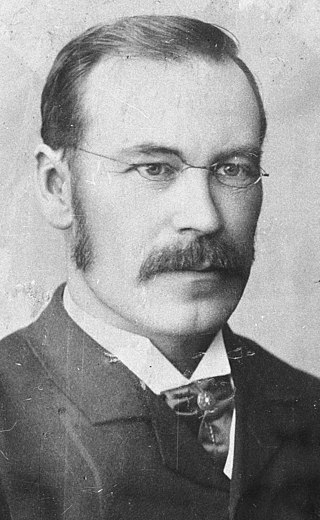Related Research Articles

The 1896 New Zealand general election was held on Wednesday, 4 December in the general electorates, and on Thursday, 19 December in the Māori electorates to elect a total of 74 MPs to the 13th session of the New Zealand Parliament. A total number of 337,024 (76.1%) voters turned out to vote.

Henare Kaihau was a New Zealand Māori politician, serving as Member of the House of Representatives for the Western Maori electorate.

Whanganui is a New Zealand parliamentary electorate. It was first established in 1860 for the 3rd Parliament and has existed continuously since then.

George Hutchison was a New Zealand politician from Taranaki.
The mayor of Whanganui is the head of the Whanganui District Council. Since 1872, there have been 29 mayors. Andrew Tripe is the current mayor.
Western Maori was one of New Zealand's four original parliamentary Māori electorates established in 1868, along with Northern Maori, Eastern Maori and Southern Maori. In 1996, with the introduction of MMP, the Maori electorates were updated, and Western Maori was replaced with the Te Tai Hauāuru and Te Puku O Te Whenua electorates.
Wakatipu was a parliamentary electorate in the Otago region of New Zealand, from 1871 to 1928.
Wellington, was a parliamentary electorate in Wellington, New Zealand. It existed from 1853 to 1905 with a break in the 1880s. It was a multi-member electorate. The electorate was represented, over the years, by 24 members of parliament.

William Hogg Watt (1818–1893) was a 19th-century Member of Parliament in the Manawatū region of New Zealand.
Charles Edward (Mallard) Haughton was a 19th-century Member of Parliament in Otago, New Zealand.
Hugh Joseph Finn was a 19th-century Member of Parliament in the Otago region of New Zealand.

Gerard George Fitzgerald was a 19th-century Member of Parliament in New Zealand. Like his brother James FitzGerald, he was a journalist of considerable ability, and co-founded The Southland Times in 1862. For the last 19 years of his life, he was editor of The Timaru Herald.

The 13th New Zealand Parliament was a term of the New Zealand Parliament. It was elected at the 1896 general election in December of that year.

The 14th New Zealand Parliament was a term of the New Zealand Parliament. It was elected at the 1899 general election in December of that year.

Peter Thomas Finn was a barrister in Victoria, Australia and Invercargill, New Zealand. For a short time, he was a member of the Victorian Legislative Assembly for the electorate of Avoca.
The 1886 Western Maori by-election was a by-election held in the Western Maori electorate during the 9th New Zealand Parliament, on 23 December 1886. The by-election was caused by the death of the incumbent, Te Puke Te Ao, and was won by Hoani Taipua.
The 1868 Rangitikei by-election was a by-election held on 22 June 1868 in the Rangitikei electorate during the 4th New Zealand Parliament.
The 1880 Waitaki by-election was a by-election held on 16 June 1880 in the Waitaki electorate in the Otago and Canterbury regions during the 7th New Zealand Parliament.
The 1877 Totara by-election was a by-election held on 30 April 1877 in the Totara electorate on the West Coast of New Zealand during the 6th New Zealand Parliament.

The Wanganui was an iron Brigantine Twin Boiler Screw steamer built by Gourlay Brothers & Co and launched in July 1863 for the Wanganui Steam Navigation Company for trade around the Wanganui region of New Zealand. The vessel served in this region up to 1873 when its ownership was transferred to Messrs Henry Houghton and Co., of Dunedin. In 1880 the vessel was transferred in to the Australian East coast service where it sank whilst entering Clarence River on 20 June 1880.
References
- ↑ Wilson, James Oakley (1985) [First ed. published 1913]. New Zealand Parliamentary Record, 1840–1984 (4th ed.). Wellington: V.R. Ward, Govt. Printer. p. 203. OCLC 154283103.
- ↑ "Telegrams". Wanganui Herald. 5 March 1872.
- ↑ "Monthly Letter Home". Southgland Times. 12 March 1872.
- ↑ "Political". Wellington Independent. 16 March 1872.
- ↑ "Hawke's Bay Times". 21 March 1872.
- ↑ "Untitled". Wanganui Herald. 16 March 1872.
- ↑ "Queenstown". The Evening Post . 9 March 1872.
- ↑ "Untitled". Wellington Independent. 28 May 1872.